Reviews
Public Sculptures by Damien Hirst and Chapman Brothers Unveiled in Oslo
The sculpture park welcomes half a million visitors a year.
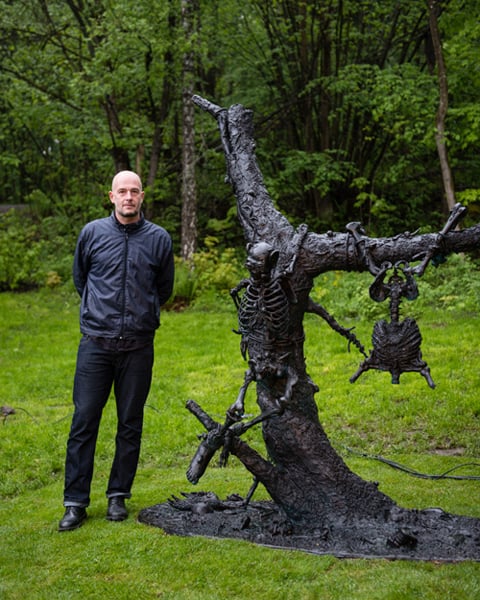
Photo: courtesy Ekebergparken
The sculpture park welcomes half a million visitors a year.

On a rainy day in the last weekend of May, collector and developer Christian Ringnes celebrated the unveiling of two new additions to Oslo’s Ekebergparken sculpture park with a lavish open-air event for hundreds of guests who adhered to the evening’s strictly black-and-white dress code.
Inaugurated in 2013, after nearly a decade of planning, the 64-acre public park offers a postcard-perfect view of Oslo’s stunning harbor, the sleek opera house, the Nobel Peace Prize building, and the Renzo Piano-designed Astrup Fearnley Museum.
Ekebergparken is a historic site with remains from the Stone, Bronze, and Viking ages. It first opened as a public park to improve the health of the city’s inhabitants some 120 years ago, but fell out of fashion and slowly deteriorated.
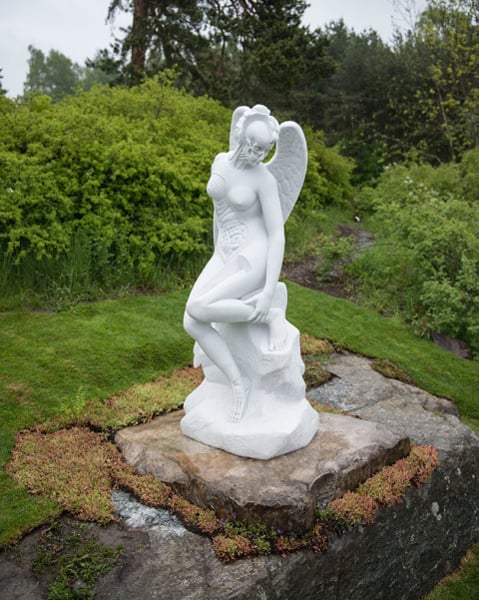
Damien Hirst Anatomy of an Angel (2008)
Photo: Courtesy Ekebergparken
Ringnes, who is credited with reviving the park, works closely with the city council and an advisory committee on acquisitions, and the scavenger hunt for the artworks along the pathways is a joyful experience for any art enthusiast.
The sculptures on display run the gamut from classic masters like Auguste Rodin and Aristide Maillol to site-specific contemporary installations by Jenny Holzer, Louise Bourgeois, and Tony Oursler, as well as a Dan Graham pavilion, and a skyscape by James Turrell, where sunrise sessions for small groups can be booked (see See James Turrell’s Spectacular Light Projections at Houghton Hall and National Gallery of Art in Canberra Offers Naked Tours of James Turrell’s Artwork).
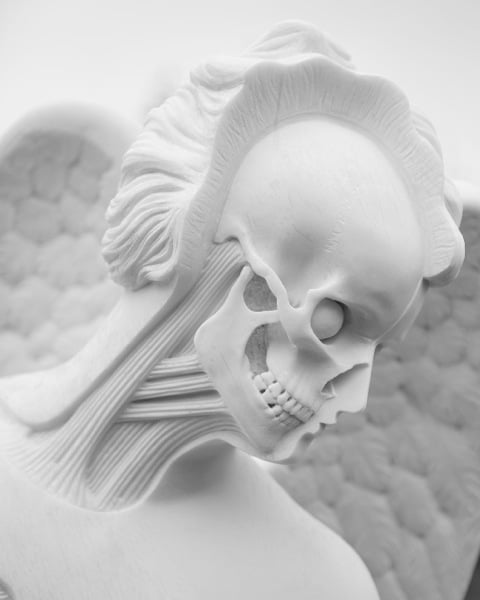
Damien Hirst Anatomy of an Angel (detail)(2008)
Photo: Courtesy Ekebergparken
Interestingly, the two new additions to the park came from YBAs, and their themes and materials inspired the evening’s black-and-white color code. Sturm und Drang (2014), by the Chapman Brothers revisits the artists’ explorations of Goya’s Disasters of War series, using maggots and skeletons from joke shops cast in bronze. Anatomy of an Angel (2008), on the other hand, is the first ever marble sculpture produced by Damien Hirst (see Damien Hirst Has Turned 50. We Review His Life and Career). Both works play on dualities: life and death, humor and solemnity, beauty and decay, good and bad.
The sculptures were unveiled to much ado. Teenage performers in black and white leotards and wings danced along the winding pathways leading to the site. Following an a capella performance and welcome speeches, Jake Chapman took to the stage and confessed to an enthusiastic audience of well-heeled Norwegians that, to him, the hoopla was more confounding than a recent family visit to Euro Disney, and that he felt like he had “joined a Scandinavian cult.”
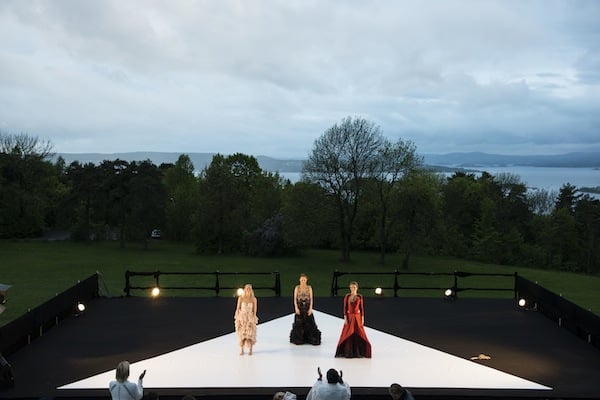
Performance of a dance inspired by the Edvard Munch painting The Dance of Life
Photo: Courtesy Ekebergparken
The speech was received with good humor, and the swarm continued to the site of the newly unveiled Hirst. The location, with its undulating lush greenery, is said to be the backdrop scenery in Edvard Munch’s The Dance of Life. As some guests—including Chapman—sought shelter from the rain, the evening’s program continued undeterred, with an interpretive dance inspired by the Munch painting.
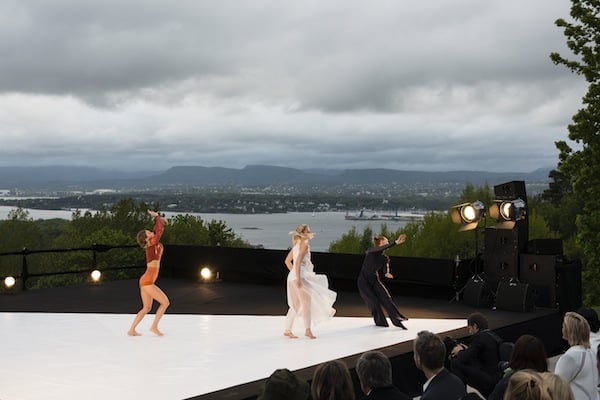
Photo: Courtesy Ekebergparken